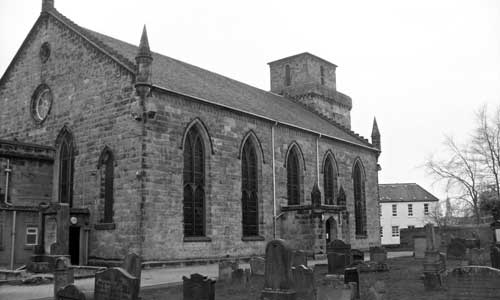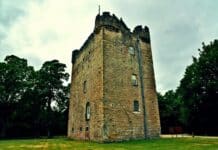Guest writer GREGOR STEWART reveals how the dead would talk in ancient Scottish court cases, in this exclusive extract from his book, Haunted Kirkcaldy
In Scotland, there used to be a practice that appears bizarre today, where the dead were both allowed to stand trial and to give evidence in court cases.
One famous case of this occurred following the events on the 5th August 1600, known as the Gowrie Conspiracy, during which John Ruthven, 3rd Earl of Gowrie and his brother, Alexander, are said to have lured King James 6th to Gowrie House with the intention to kidnap him.
The attempt was unsuccessful and, in the resultant fight, both John and Alexander Ruthven were killed.
Shortly afterwards, the order was given that the brothers’ bodies were to be embalmed and they were taken to Edinburgh where they stood trial for treason. The fact the two men were already dead and could not offer any defence seems to have been irrelevant, and in due course they were both found guilty, with the punishment for treason being execution. The two corpses were then hung, drawn and quartered.
Haunted Kirkcaldy
In Kirkcaldy, although not a traditional ghost story as it did not involve the appearance of a phantom, there was an event in which it appears the spirit of a dead man returned to his corpse to give evidence during a trial. The case is recorded in both the Domestic Annals of Scotland: From the Reformation to the Revolution by Robert Chambers, published in 1874, and the book County Folklore Volume 7 (1912) and is said to have occurred on June 16th in the year 1662.
A Kirkcaldy malt man named George Grieve, while operating the malt kiln, was shot in the head by his son. The reason for the murder is believed to have been an unfortunate conclusion to a series of arguments the father and son had been having.

In an attempt to conceal the murder, the son loaded his father’s body onto one of his horses and rode to a nearby bridge, where he threw the body into the river below.
Unfortunately for the son, the body was found the following morning and the officials brought in both him and his mother as suspects for the murder.
As it was believed the dead man could assist in identifying his killer, the body was brought before them and both were asked to touch him.
Nothing happened, but the belief was that the body would not identify the killer until at least twenty-four hours had passed since the death. As the authorities did not know how long the body had been in the river, the suspects were held for several more hours before again being asked to touch the dead man.
As soon as the son placed his hand on the body, the corpse is said to have started to bleed from the nose. When he removed his hand, the nosebleed stopped.
The son continued to plead his innocence, maintaining he had no knowledge of the murder and so his mother was once again asked to touch the corpse. She did so, and nothing happened. Still denying any involvement, the son was once again told to place his hand on his father’s body, and the nosebleed returned.
The bleeding corpse was considered sufficient evidence to prove the young man’s guilt and he subsequently confessed that he was the killer, and that his mother had played no part in the murder. He was sentenced to death and hung in Kirkcaldy.







